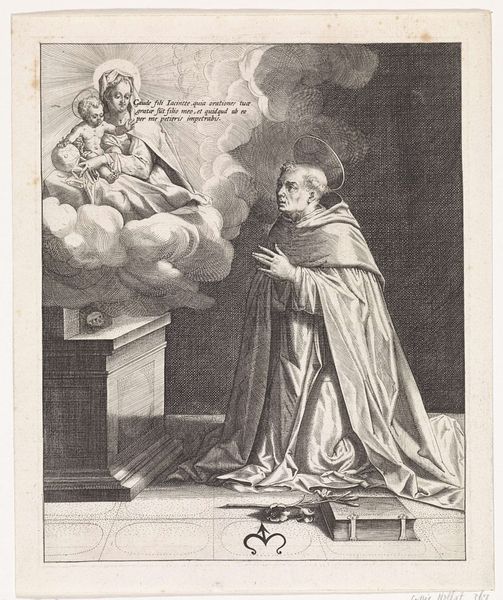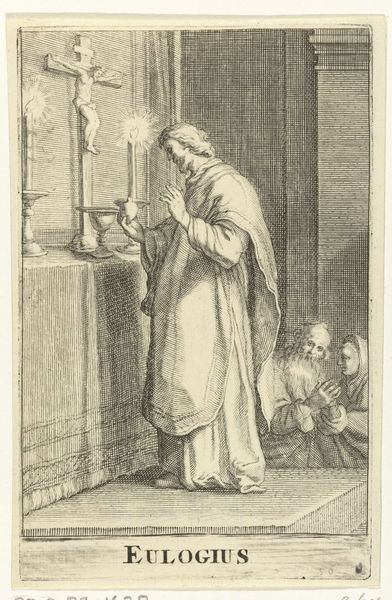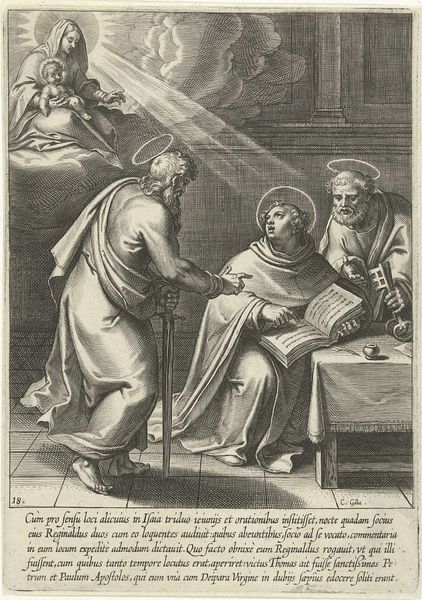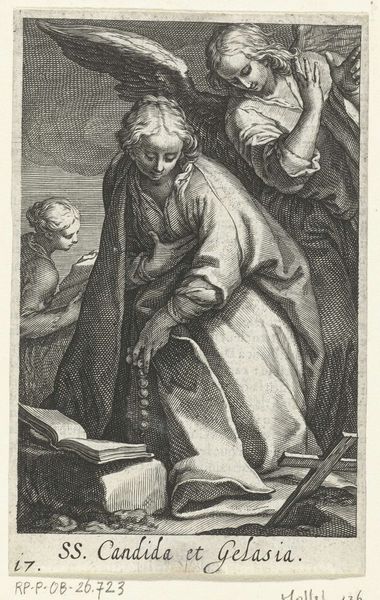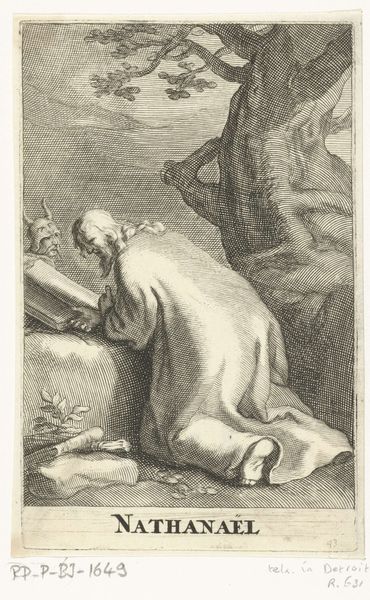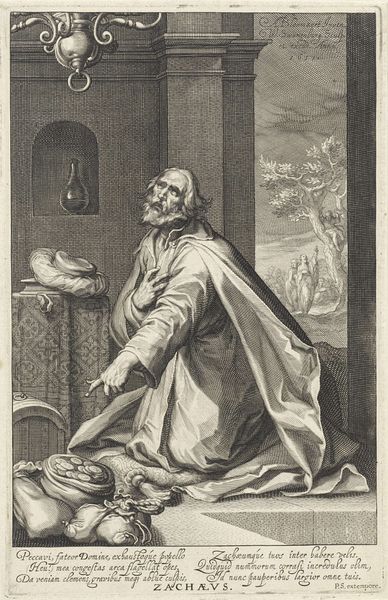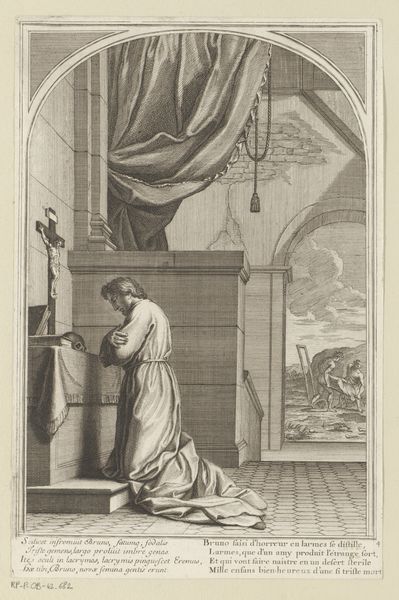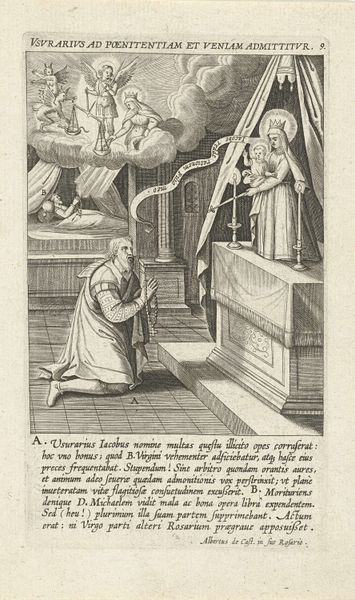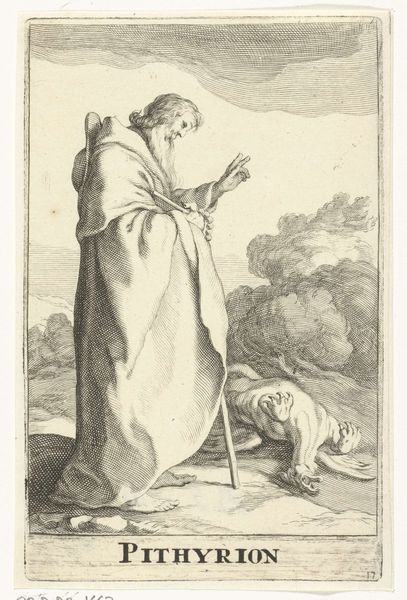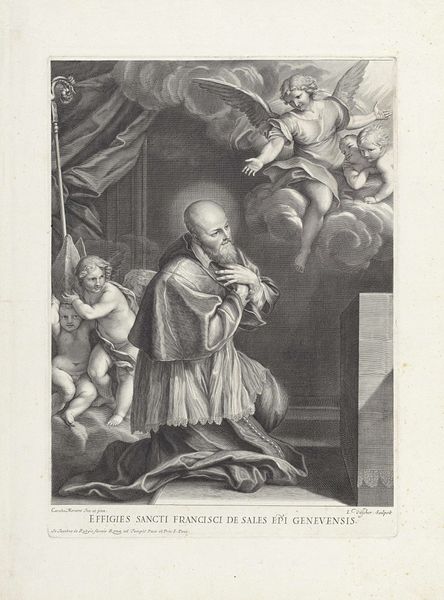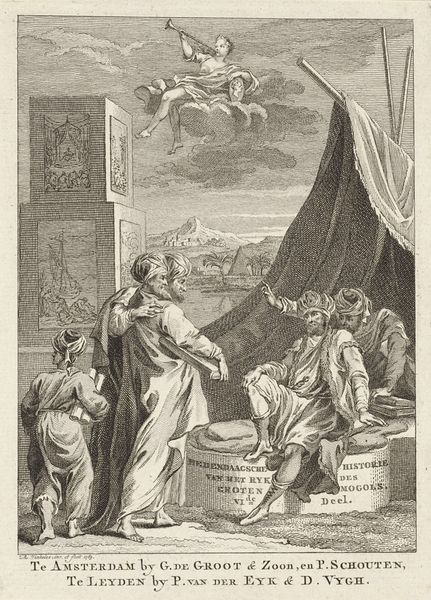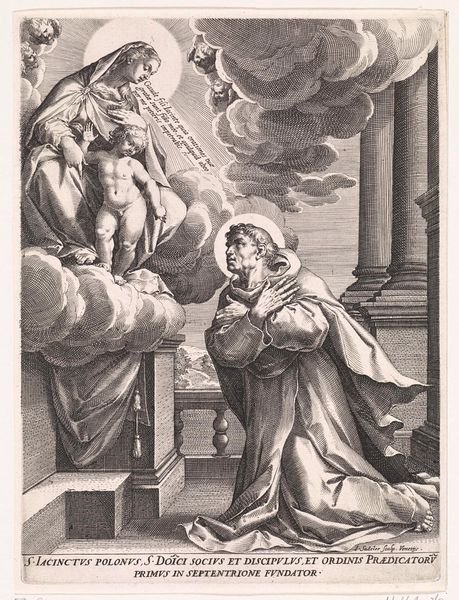
engraving
#
portrait
#
baroque
#
old engraving style
#
caricature
#
figuration
#
line
#
history-painting
#
engraving
Dimensions: height 135 mm, width 85 mm
Copyright: Rijks Museum: Open Domain
Curator: Here we have “Heilige Posidonius van Thebe” or "Saint Posidonius of Thebes," an engraving by Frederick Bloemaert made sometime after 1636. It currently resides here at the Rijksmuseum. The crispness of the engraved line gives it almost a photographic feel, despite its clear historical context. Editor: There's something so stark about the composition. It feels both reverent and deeply unsettling. I'm immediately drawn to the bizarre little dragon-like figure in the beam of light. What’s going on here? Curator: Well, let’s consider the materiality. As an engraving, it’s inherently reproducible. Bloemaert's choice of this medium would allow the story of Posidonius to be disseminated widely, making him accessible beyond an elite circle. I wonder what kind of workshop and apprenticeship informed his masterful use of line and burin? Editor: That beam of light…and the supplicant’s open hands. This visual motif screams divine intervention, or some sort of revelatory experience. It is compelling that this "dragon-like" creature would represent divine interaction for its historical context. Could this form be an allegory for some societal fear, given it’s accompanied by what looks to be a woman in her bedchamber and a vulnerable child? Curator: A fine observation about fear! Bloemaert's choice of engraving as a medium also speaks volumes. Think about the labour involved. The painstaking carving, the precision required... This isn't just an image; it's the product of hours upon hours of skilled labour intended to propagate the image for a potentially wide and receptive audience. Editor: The historical element adds an interesting layer. I can't help but consider how symbols of the sacred or divine change, morph, and are reinterpreted across time, shaped by societal anxieties. Posidonius Thebeus’ name itself invokes the antiquity of the Hellenic world. Curator: Precisely. And considering the original function and dissemination of the engraving is crucial too. It wasn't intended to hang in a gilded frame; it was designed for consumption, trade, and the transmission of stories about the figure. A mass producible emblem of its era and social context, quite distinct from say, an oil painting. Editor: It all circles back to the power of imagery. Frederick Bloemaert's visual language serves not just as a story but, as you highlight, encapsulates social constructs about access and power. Thinking about art in this way just deepens our appreciation of their history and enduring relevance, doesn't it? Curator: Indeed. Examining the artwork as a product as well as an image allows us to consider both labour and lore in ways that are so frequently overlooked.
Comments
No comments
Be the first to comment and join the conversation on the ultimate creative platform.
